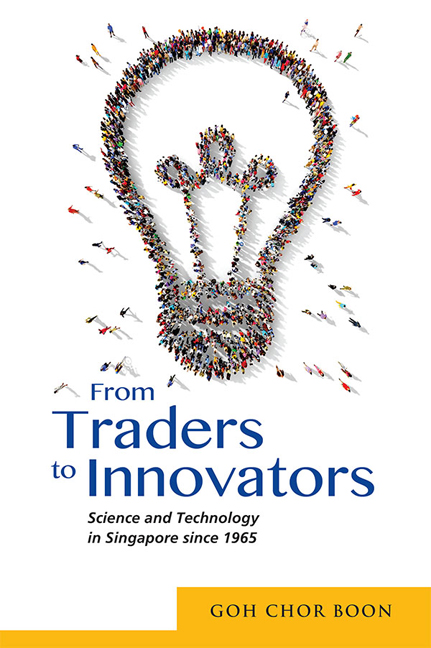Book contents
- Frontmatter
- Contents
- List of Abbreviations
- Introduction
- 1 From Dependency Theory to Creative Innovation
- 2 Surviving and Catching Up in the 1960s and 1970s
- 3 Developing a Technological Growth Trajectory in the 1980s
- 4 State Intervention and Technological Change
- 5 Nurturing a Scientific Culture
- 6 Sociocultural Attributes and R&D
- 7 Towards a Technologically Creative Society
- 8 Conclusion: Power of a Service-Brokerage Culture
- Bibliography
- Index
- About the Author
- Frontmatter
- Contents
- List of Abbreviations
- Introduction
- 1 From Dependency Theory to Creative Innovation
- 2 Surviving and Catching Up in the 1960s and 1970s
- 3 Developing a Technological Growth Trajectory in the 1980s
- 4 State Intervention and Technological Change
- 5 Nurturing a Scientific Culture
- 6 Sociocultural Attributes and R&D
- 7 Towards a Technologically Creative Society
- 8 Conclusion: Power of a Service-Brokerage Culture
- Bibliography
- Index
- About the Author
Summary
In recent years the small island city-state of Singapore has gained the world's attention for its aggressive policies in enticing the international scientific community and corporate entities to relocate and contribute to its agenda of building a world-class research and development (R&D) hub. The Singapore Government has also been making concerted efforts to encourage young Singaporeans to think “science and technology”, to motivate science and engineering graduates to pursue their interests in the field of R&D, and to propagate the rise of a critical mass of technopreneurs. At the national policy level, Singapore's science and technology (S&T) policy has shifted from the traditional wholesale adoption of Western technology of the 1970s and 1980s to a policy that aims to promote indigenous technology development through an integral dynamic innovation-systems perspective for stimulating innovation. Singapore is ploughing 2.3 per cent of its gross domestic product (GDP) into R&D, which brings it closer to other countries famed for their focus on research, such as Denmark and Switzerland. Singapore targets to raise R&D spending to 3.5 per cent of GDP by 2015, which would place the small citystate among the top five research-intensive countries, including Israel, Sweden and Japan.
Singapore's determined move to integrate science and technology into its overall economic strategic plan has been largely influenced by many changes. The desire to close the technological gap also reflects the prevalent ideology to survive and to catch up in view of the dynamic changes in economic relations between countries, in which technology has become a dominant competitive force. Singapore's economic growth now centres on an innovation-driven, industrial strategy. Innovation is more than simply new technologies; it involves how business processes are integrated and managed, how services are delivered, how public policies are formulated, how markets are developed and, more broadly, how the society could benefit from creativity and innovation. It is also the case that in a global, knowledge-driven economy, technological innovation — defined as the transformation of new knowledge into products, processes and services of value to society — is critical to competitiveness, longterm productivity growth and an improved quality of life. Among the major factors determining the city-state's global competitive position, a well-planned science and technology policy and technology infrastructure can be considered as important pillars.
- Type
- Chapter
- Information
- From Traders to InnovatorsScience and Technology in Singapore since 1965, pp. xi - xxPublisher: ISEAS–Yusof Ishak InstitutePrint publication year: 2016

